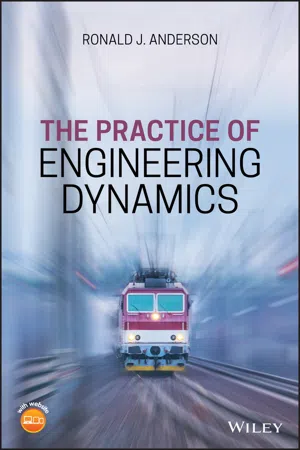
The Practice of Engineering Dynamics
Ronald J. Anderson
- English
- ePUB (handyfreundlich)
- Über iOS und Android verfügbar
The Practice of Engineering Dynamics
Ronald J. Anderson
Über dieses Buch
The Practice of Engineering Dynamics is a textbook that takes a systematic approach to understanding dynamic analysis of mechanical systems. It comprehensively covers dynamic analysis of systems from equilibrium states to non-linear simulations and presents frequency analysis of experimental data. It divides the practice of engineering dynamics into three parts: Part 1 - Modelling: Deriving Equations of Motion; Part 2 - Simulation: Using the Equations of Motion; and Part 3- Experimental Frequency Domain Analysis. This approach fulfils the need to be able to derive the equations governing the motion of a system, to then use the equations to provide useful design information, and finally to be able to analyze experimental data measured on dynamic systems.
The Practice of Engineering Dynamics includes end of chapter exercises and is accompanied by a website hosting a solutions manual.
Häufig gestellte Fragen
Information
Part I
Modeling: Deriving Equations of Motion
1
Kinematics
1.1 Derivatives of Vectors

- The rate of change of magnitude .

- The rate of change of direction .










